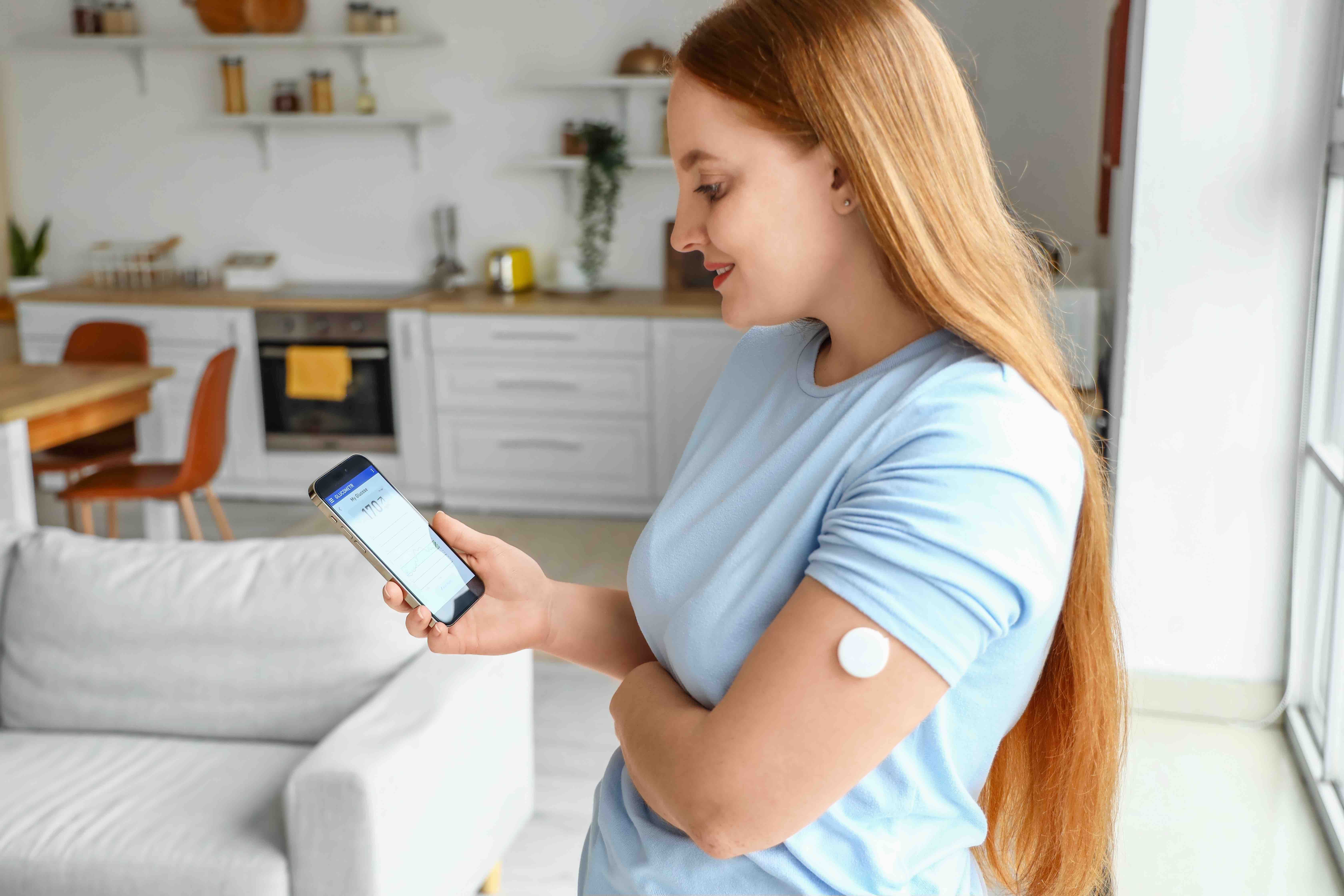News
Article
Patients With T1D Report Improved Management Using DIY-CGM vs isCGM
Author(s):
The study aimed to determine the perceived advantages and disadvantages of the smartwatch-integrated, do-it-yourself continuous glucose monitoring (DIY-CGM) device from the perspective of patients with type 1 diabetes (T1D).
A small study of patients with type 1 diabetes (T1D) found that smartwatch-integrated, do-it-yourself continuous glucose monitoring (DIY-CGM) improved the experience of diabetes self-management compared with intermittently scanned CGM (isCGM).
The qualitative study was published in the journal Diabetic Medicine and suggests that DIY-CGM, a less costly alternative to standard real-time continuous glucose monitoring (rt-CGM), may reduce disease burden compared with isCGM. Patients reported that DIY-CGM made accessing glucose information easier and that DIY-CGM reduced self-management burden vs isCGM.
Continuous glucose monitoring | Image credit: Pixel-Shot - stock.adobe.com

While rt-CGM is recommended in major guidelines for T1D management, the global uptake of rt-CGM has been slow due to regulatory and cost barriers. DIY-CGM is a more affordable alternative that utilizes a third-party device that uses Bluetooth to transmit data to a smartphone or smartwatch from a first-generation isGCM (the FreeStyle Libre Flash Glucose Monitoring System).
The qualitative, descriptive study aimed to fill a knowledge gap surrounding the use of DIY-CGM by patients with T1D and determine the perceived advantages and disadvantages of the DIY-CGM device from the patient perspective.
“While a qualitative meta-synthesis on the impact of continuous glucose monitoring on life with T1D concluded that CGM impacts physical, emotional and relational aspects of life, limited pediatric and no adult studies report on experiences with DIY-CGM,” the authors wrote. “In addition, the use of wearable technologies for accessing glucose metrics, such as a smartwatch, is playing an increasing role in diabetes care, but little is known about whether they provide additional benefits to users.”
Researchers identified and enrolled patients who were participating in a multi-center, randomized, controlled, crossover clinical trial aiming to evaluate the effectiveness of DIY-GCM including smartwatch integration vs isCGM in patients aged 16 to 69 years. A total of 12 participants completed the qualitative sub-study after completing the intervention arm of the main study. These patients participated in semi-structured virtual interviews, with a response rate of 100%.
The responses fell into 3 main categories and 7 subcategories, with the 3 main themes being evolution of DIY-CGM use, device trust, and challenging user experiences.
Overall, participants reported improved glycemic control and improved quality of life with DIY-CGM vs isCGM, including by reducing disease burden because patients did not need to scan their isCGM sensor when using DIY-CGM technology. The alarm function and trend information gave patients insight into reduced glycemic variability overnight and after eating, and the smartwatch feature facilitated discrete access to glucose information.
Participants reported mostly positive experiences using the smartwatch to view their glucose data, but some reported a preference for using the phone alone. Many patients experienced technological malfunctions related to device connectivity, the authors noted, but no serious diabetes-specific incidents resulting from such malfunctions were reported.
There was a high degree of trust in DIY-CGM despite its challenges, with all participants reporting at least some trust in the technology. Nearly half of patients reported trusting the technology completely, and almost half reported trusting it on most occasions.
The authors noted several limitations of the study, including that the reported trust in the technology should be considered in the context of participants taking part in a clinical trial and might not be representative of the wider population of patients using DIY-CGM. The study also only included 2 months of DIY-CGM, so longer studies are needed to evaluate the advantages and disadvantages of DIY-CGM.
Still, the study suggests that DIY-CGM may be an acceptable and convenient form of real-time continuous glucose monitoring for adults in a cost-constrained environment.
“As long as isCGM remains cheaper than most commercial rt-CGM, DIY-CGM has the potential to increase access to rt-CGM use, especially if more clinicians and nurse specialists became familiar with its use,” the authors concluded. “A previous study has shown that rt-CGM can reduce inequities in glucose outcomes based on socio-economic status or ethnicity, and therefore a lower cost DIY-CGM has a role as an interim measure while advocacy to improve access for all to rt-CGM continues.”
Reference
Sehgal S, Boucsein A, Style S, et al. Do-it-yourself continuous glucose monitoring in people aged 16 to 69 years with type 1 diabetes: A qualitative study. Diabet Med. 2023;e15168. doi:10.1111/dme.15168




